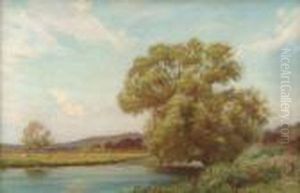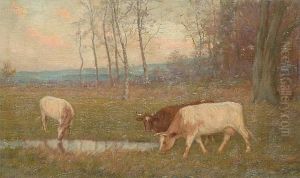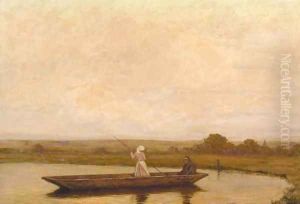William Henry Gore Paintings
William Henry Gore was an American landscape painter, best known for his depictions of the Southern United States. Born in 1871, Gore's early life is somewhat obscure, but it is believed that he showed an early interest in art, which would become his lifelong passion.
His artistic career began in earnest in the late 19th century, a time when American art was undergoing significant changes with the influence of European styles, particularly Impressionism. Gore, however, was primarily influenced by the natural beauty of the American landscape, which became the central theme of his work. He traveled extensively throughout the South, capturing the unique light, atmosphere, and topography of the region with a particular focus on the states of Georgia and Florida.
Gore's approach to landscape painting was characterized by a realistic representation of his subjects, with a keen attention to detail and a love for the varied landscapes of his native country. His paintings often featured serene scenes of rural life, the untouched wilderness, and the changing seasons. He was particularly adept at rendering the effects of sunlight and shadow, which added a sense of depth and vitality to his works.
Despite his talent, William Henry Gore did not gain the same level of fame as some of his contemporaries. His work was, however, appreciated by art collectors and connoisseurs who recognized the quality of his landscapes. Throughout his career, he exhibited his work at various local and regional galleries, and his paintings are now considered valuable records of the American South at the turn of the century.
William Henry Gore continued to paint until his death in 1940. His legacy is somewhat modest compared to other giants of American art, but his contributions to the genre of landscape painting are nonetheless significant. Today, his works can be found in private collections and occasionally appear at auction, where they are appreciated for their historical value and artistic merit. Gore's dedication to capturing the essence of the Southern landscape has earned him a place among the noteworthy American landscape artists of the early 20th century.




















